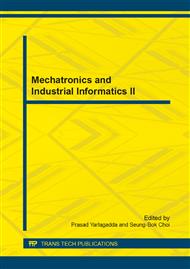p.606
p.610
p.616
p.620
p.625
p.631
p.636
p.640
p.649
New Control Topology for Railway Static Power Conditioner
Abstract:
The traction power supply system of electric railway has the disadvantages of heavy unbalanced three phase, large harmonics and reactive power. Based on back-to-back converter, railway static power conditioner (RPC) can effectively balance the load between two arms, compensate the harmonic current and reactive power. As the conventional PI control is difficult to trace the waveform, a dual-loop control scheme was applied. The control scheme reduces the influences of the factors, such as sampling and calculation delay, dead-zone, parameters’ shift, on the system stability and enhances the robustness of the whole system. It can also eliminate the negative sequence current and three-phase voltage fluctuations of the primary side, improve the power factor and harmonic filter, so that electrified railway power quality problems can be resolved perfectly. The whole design was provided. Analysis and simulation results testify the effectiveness of the proposed control scheme.
Info:
Periodical:
Pages:
625-630
Citation:
Online since:
July 2014
Keywords:
Price:
Сopyright:
© 2014 Trans Tech Publications Ltd. All Rights Reserved
Share:
Citation:


